Cinder blocks are actually CMUs (an acronym for concrete masonry unit) i.e. large, rectangular bricks which are used in construction, but have a lot of other uses.
We’ll explore 15 smart ideas for using cinder blocks for your homestead.
Why cinder blocks you may be wondering? Well, because they’re readily available at any hardware store or construction site, you can get them for basically nothing if you scrap or recycle them, they’re relatively lightweight, tough, and they require next to nothing in terms of maintenance.
How To Build a Small Bunker in Your Backyard with $400
As you can see, they’re perfect for building all sorts of things (affordable, utilitarian pieces mostly) at dirt cheap prices when compared with what you can buy from a hardware store.
1. Build a Block Fire Pit Using Cinder Blocks
First you should check out the laws and regulations in your county regarding building fire pits. Sometimes you’ll need a permit and may also have to pay a relatively small fee for building it.
After that, you’ll need to choose the best spot for your cinder block fire pit. You’ll want it to be far enough away from your house, plants, firewood and anything else that it may ignite accidentally. Ideally, your block fire pit should be in the proximity of a water hose in case of fire emergencies.
After you’ve found the “sweet spot”, all you’ll need are 24 fire-resistant cinder block caps, 2 bags of lava rock and a bag of mortar, with an estimated building cost of under $50. Here’s how it should look like:
2. Use Cinder Blocks for Root Cellar Shelving
Yes, you can use cinder blocks for building furniture in a way that doesn’t look terrible!
You won’t even need to glue, nail or drill them so they make for an awesome raw material for building shelves in your root cellar. The designs, patterns and size options for building shelves out of cinder blocks are endless.
Basically you can put cinder blocks to good use in your cellar for storing your food, gear and whatever else you’d like in whatever style you choose. This is an example of what a true prepper’s cellar might look like.
3. Build an Outdoor Cinder Block Bench
Here is yet another great idea for building outdoor furniture using cinder blocks. The main advantage of this DIY project is that it can be done in half an hour with almost no tools required.
The cinder block bench is weatherproof, tough as nails and it looks great! You can decorate it even further; the only limit is your imagination.
The hardest part of this DIY project is to load and unload the cinder blocks; the rest is a piece of cake.
You may want to add some paint and cushions and voila, for under $30 you can have your own customized outdoor cinder block bench, which comes handy for any occasion.
4. Build a (Portable) Fireplace Using Cinder Blocks
Just take a look at the picture and figure it out for yourself. With just a few cinder blocks you can build yourself a cool fireplace at next-to-nothing costs, saving you a great deal of money and adding a practical and attractive element to your garden or outdoor space.
The best thing about this project is that you can always dismantle it, put it in the back of your truck and relocate it wherever you need it. Since there’s no mortar, glue, nails or anything like that involved in its construction, the cinder block fireplace can be easily moved around with minimal effort.
Or, you can build it in your favorite place and forget about it, as it’s weather proof and it doesn’t require maintenance at all.
5. Build Steps Using Cinder Blocks
As you can see from the pictures, if you’re a DIY enthusiast and you have a little skill and the will, you can build awesome things using cinder blocks.
In this case, they’re building steps, which are hugely practical, inexpensive and they look great!
6. Use Cinder Blocks in Your Garden for a Raised Bed Garden
This is a very easy to do, practical and money-saving design for a raised bed in your garden using nothing more than a few cinder blocks and some dirt or potting soil.
You just have to arrange the cinder block in a rectangular shape, fill the inner spaces with dirt and voila, job’s done!
7. Use Cinder Blocks for Building a Bench With a Twist
Unlike the other outdoors bench project, this one is built next to your house wall which will act like a backrest.
You can use pillows for cushioning and you can decorate it in any way you like; the possibilities are endless.
8. Build an Outdoor Fireplace Using Cinder Blocks
Just take a look at this picture and you’ll understand what I am talking about. Here’s an YouTube tutorial about how to build an outdoor fireplace for your backyard using dirt cheap cinder blocks and a little bit of elbow grease.
You don’t need previous experience; just the will and the skill will get you through.
9. DIY Your Own Ground Fire Pit Using Cinder Blocks
If you take a peek at this pic, you’ll probably think about weird stuff like human sacrifice. Actually, it’s a ground fire pit made from cinder blocks and used for cooking, getting warm or roasting marshmallows on a nice night. It also looks pretty cool, but before starting you may want to check out your local building codes to see if that’s kosher in your area.
Using cinder blocks for this endeavor will require minimal effort, little money and next to zero skills. It’s an awesome project to do with your kids, as it needs only minimal supervision and makes for lots of fun.
{adinserter usf}You can start with a temporary ground fire pit and you can convert it later into a “permanent” (as in mortared) affair if you decide you like the concept and location. Don’t build it near flammable structures like garages, sheds, overhanging trees or your home.
Also, you can build this baby directly on the ground, with the cinder blocks corralling the flame, but I would advise you to remove 5-10 inches (as pictured) of soil and place the first row of cinder blocks below the ground, thus making for greater stability and safety for your fire circle.
10. Use Cinder Blocks for Building Your Own Swimming Pool
Here are a few pictures of some folks who managed to build their swimming pool from scratch with just shovels, concrete and cinder blocks. Ok, and water, but that doesn’t count.
The DIY process is easy to understand and well-detailed if you click on the source link; besides the elbow grease involved in building the swimming pool, the rest is very straightforward, but it is pretty labor-intensive.
11. Build a Kindling Stacker
This is a super-simple project that uses just two cinder blocks and 2×4’s, as you can see it.
12. Build a Smoker/Meat Smoking Device Using Cinder Blocks
If you like to cook and smoke your own meat, this is a must-have item for gourmet enthusiasts. Here’s a video that details the “secrets” of how to build your own smoker.
If you choose to DIY your meat smoker, you’ll save lots of money in the process (it will cost you about 70 bucks) and smoked meat (brisket) is the best there is!
If you are interested, you could also read another Survivopedia article about preserving your meat.
13. Build a BBQ Rotisserie Pit Using Cinder Blocks for $250 or Less.
Why, you asked? Well, because having a BBQ at home is one of the most fun activities in the world, especially if you have kids. You can throw parties, invite your friends for a steak and enjoy the best tasting food on God’s green Earth.
We’re obviously talking about food cooked on an open flame! If you have lots of friends and/or a large family, watch the video and you’ll see what I am talking about.
14. Build a Rocket Stove Chimney Using Cinder Blocks
Hopefully you’re already familiar with my previous article about rocket stoves, which you can find here. Now, there’s an easy way to DIY your rocket-stove using cinder blocks.
Basically, this is how a dual-burner /6 cinder block rocket stove looks like and how it’s built using cinder blocks and a little bit of magic.
As you already know, rocket stoves are a very simple and highly efficient way to fuel combustion for improved performance via intelligent design. Here’s a comprehensive guide detailing how to build a five-block rocket stove with next to no costs and low skill levels.
15. Use Cinder Blocks Creatively for Building Indoor Furniture
For example, you can build a sofa bed with just 42 cinder blocks…
..or a bookshelf (you’ll require some extra stuff, i.e. 3 wood planks)…
…or anything else that you could think of.
As you can see, the possibilities for using cinder blocks for your homestead are virtually limitless.
If you have other ideas, feel free to share your creativity in the comments section below.


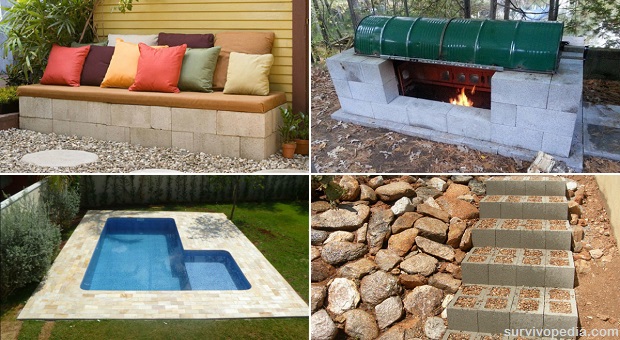
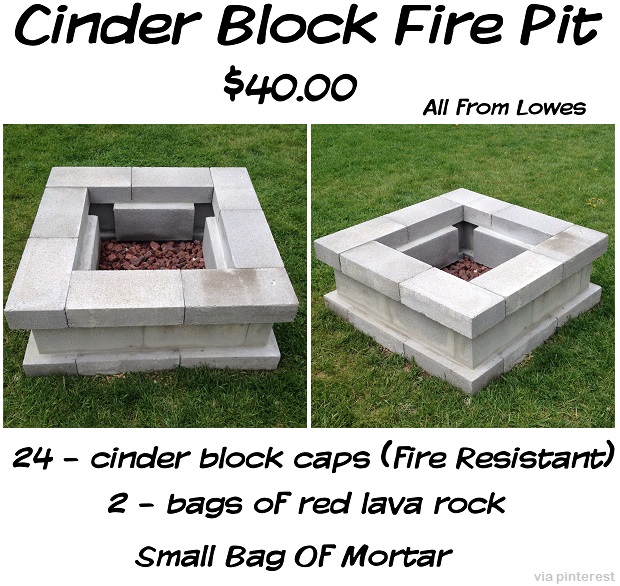
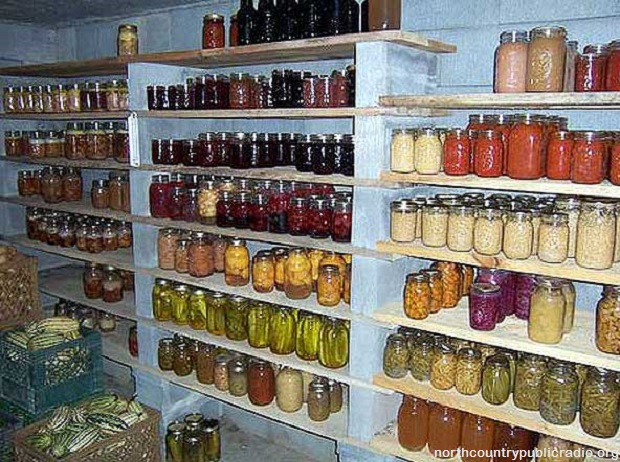
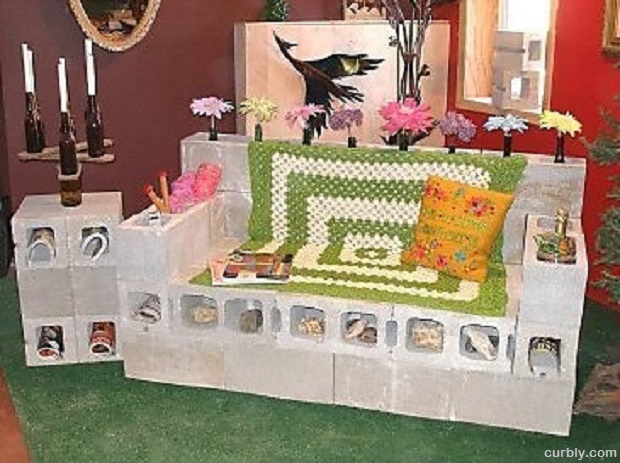
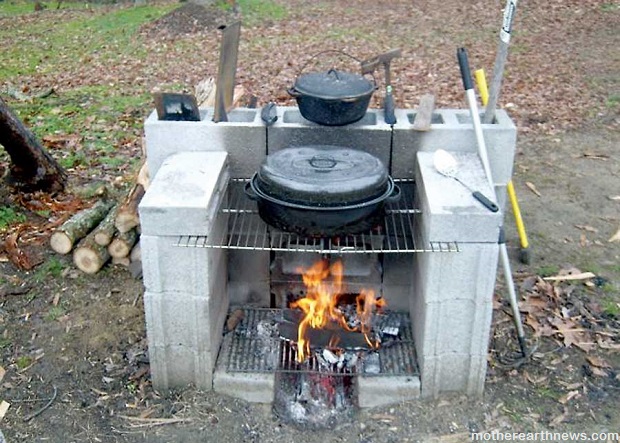
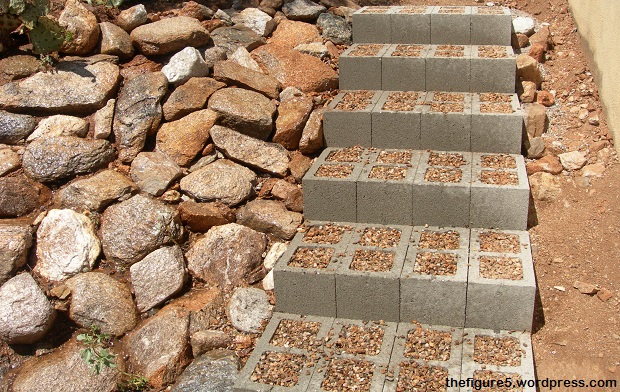
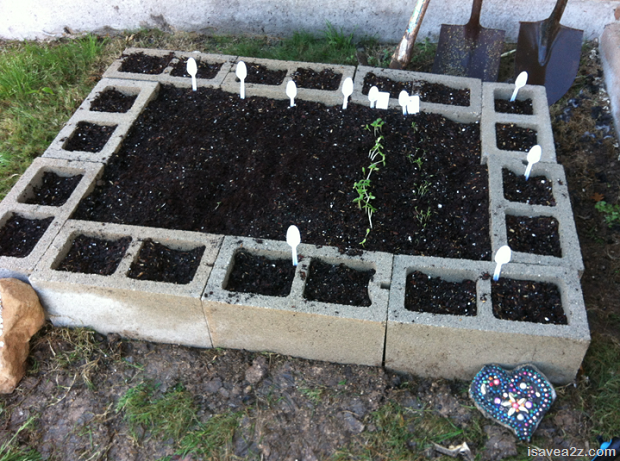
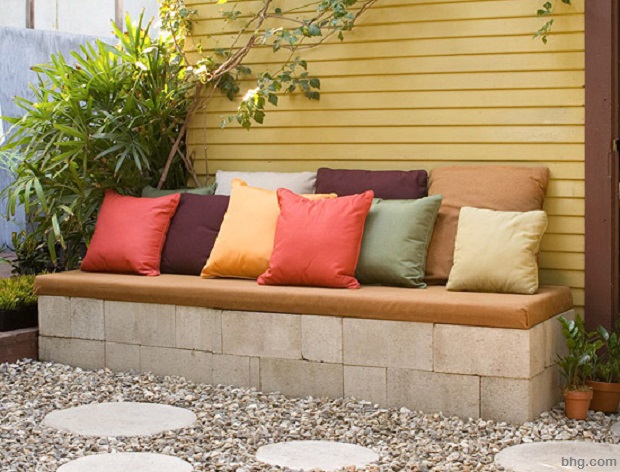
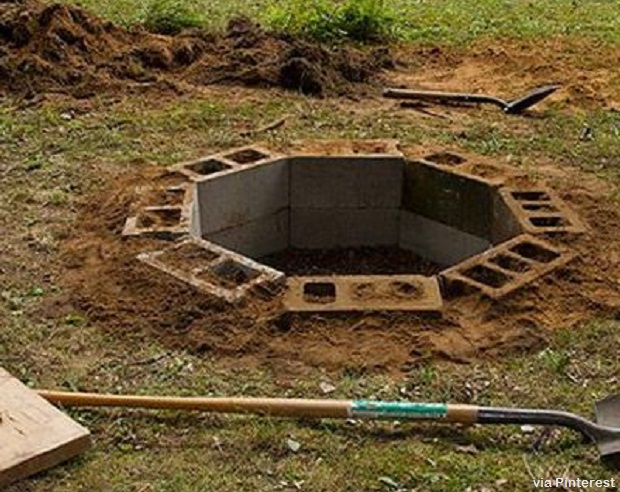
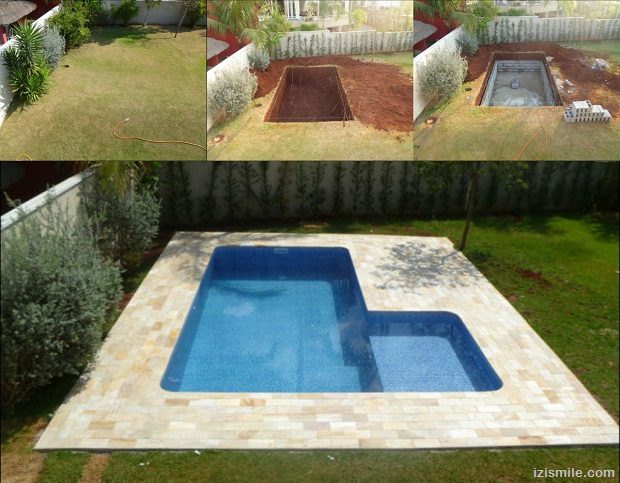
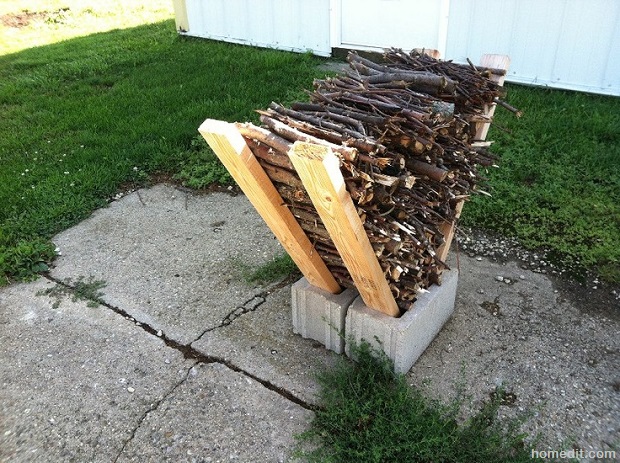
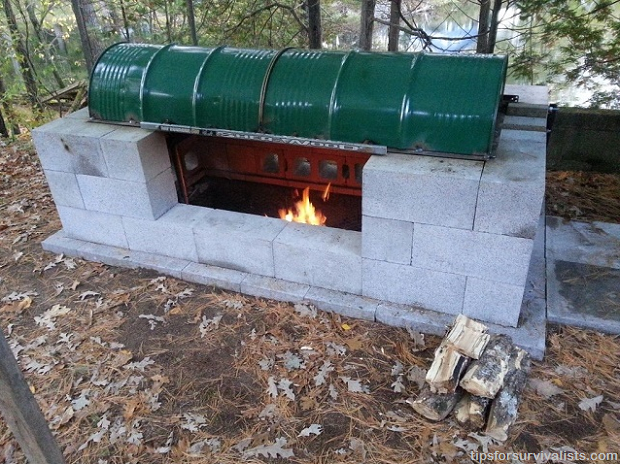
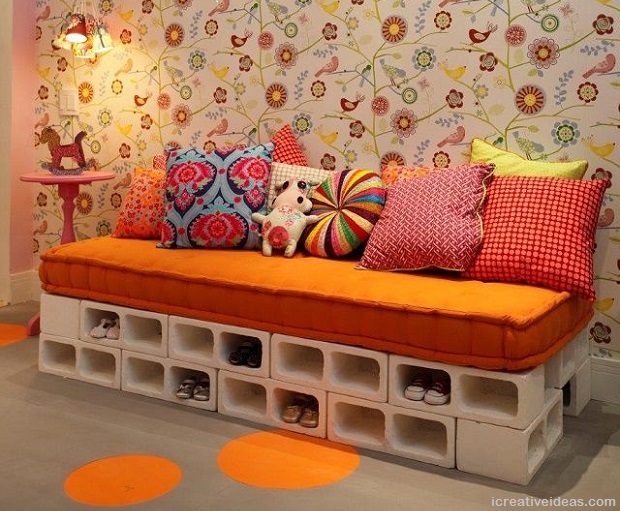
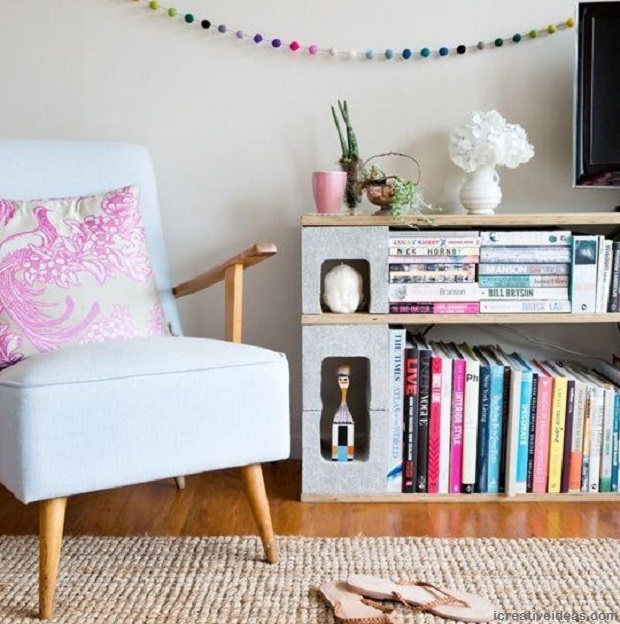

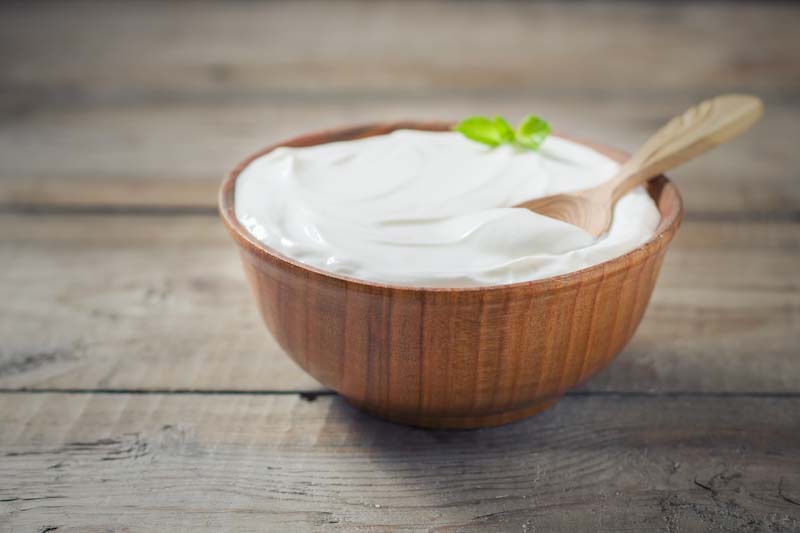
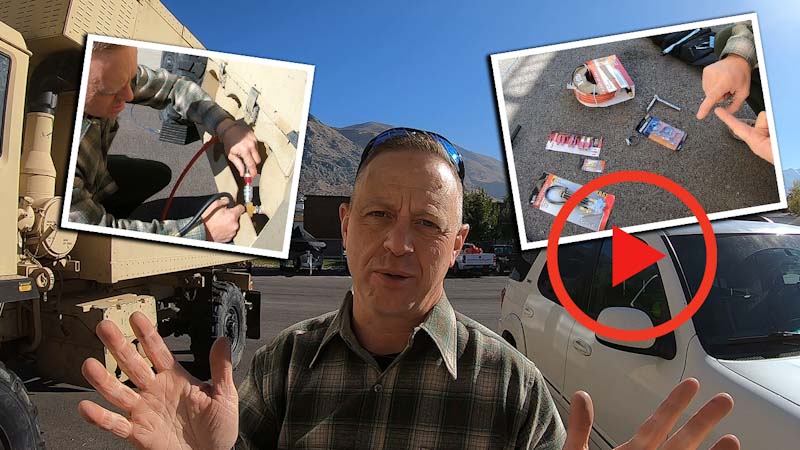
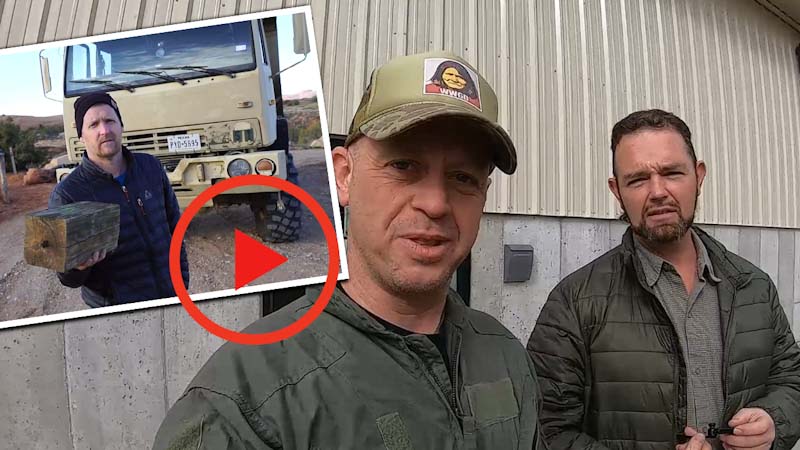



jason | May 26, 2015
|
Clever ideas. Thank you. I recall seeing a guy on youtube using gorilla glue (in place of mortar) for his cinder block wall…and apparently it works quite well. The drawback is that gorilla glue at the amount necessary for a good sized wall could be costly. Mortar would be less costly…but more messy, labor intensive, and time consuming. So it’s nice to know about these other projects that don’t require mortar/glue/nails.
Pingback:15 Ideas For Using Cinder Blocks | Prepper Chimp | May 26, 2015
|
Snake Plisken | May 27, 2015
|
I’ve seen all this stuff before ( especially when I was poor and starting out in life ) but the kindle stacker caught my interest. I have a rocket stove and am always on the lookout for kindling and ways to store it. For now, I have bundled kindling that hangs on the back of my two tool sheds but one shed is the current home of a nest of robins so I try not to disturb them as much as possible. The use of cinder blocks ( I have 8 of them unused ) looks like a great way to stack a lot of kindling!
I’m doing some gardening and using cinder blocks today!
Thanks for the great idea.
Best,
Snake Plisken
Sam | May 7, 2019
|
I agree, Snake. I’ve thought about, and used or rejected most of these ideas, except the kindling holder. That’s another one of those things that make you go, “Now, why didn’t I think of that?” That alone made the whole article. Loved it. I use cinder blocks for a temporary ‘doghouse’ for my pumphouse outlet. It will freeze here, where I am, but not bad.
Oldalaskan | May 27, 2015
|
Lot’s of good ideas but the food storage one would never work for me. The first good earthquake and it would come down.
Georgina Costello | May 29, 2015
|
How about possibly building a cinder block storm shelter, a place to hide water, etc. under ground, and I have a friend possibly considering building a house out of cinder block. Since we live in a hot climate, prone to insect infestation in wood, and other undesireable insects and critters, this kind of house would be reasonable to build, and very durable against storms, can be finished inside and out with whatever one desires to do……just some thoughts and ideas. They are already building these homes in Central Texas.
Michael | September 14, 2015
|
Building a home out of cinder block isn’t as crazy an idea as it sounds. The blocks themselves are quite sturdy. From what I have seen it would be a benefit to have steel rebars coming up out of a concrete pad and then having the cinder block placed over the bars in such a way that the bars interlock the blocks together along with the mortar. Another option to building is using the insulated concrete form. Very durable, strong, and there is quite a bit of proof as to how much they hold up in tornadoes and hurricanes. I have seen many instances where entire communities were wiped out with only the lone house made of insulated concrete forms intact and still standing.
Lori | November 3, 2016
|
My dad built a fallout shelter with cinder blocks back in the 1950s.
Alys Richards | August 13, 2023
|
Growing up in Miami in the 1950’s, all homes were built of cinder blocks, with Hurricane tie downs on the roofs. Then, the building codes were relaxed …. until Andrew came right through my former neighborhoods by the bay. All of those homes survived, while the newer ones collapsed or were condemned. It’s a solid way to build where hurricanes are a problem.
Big D | May 31, 2015
|
In the garden, be careful about filling the blocks cavaties with dirt and winter. When frozen the dirt can expand and crack the block. Common block can also crack under heat so be careful there to. If yo plan on building a house you will want to use knockout blocks every two courses and lay rebar inthose and then fill with concrete. Be sure to use concrete mixed with pea gravel and not large aggregate or you will find voids in your blocks. Use a shorter piece of rebar to push your concrete down into the blocks and past the rebar. Try to fill your blocks every two courses. A house made out of block that are not filled, is not a strong house at all. If you want a concrete house you should use forms or insulated concrete forms.(ICF’s) That would be the strongest! Stay prepared my friends!
Steve | June 4, 2015
|
G Costello: great idea. Houses built in mid-60s on Guam using concrete blocks as regular stick built rarely stand up to the hurricanes/monsoons. Same is being done in Haiti. Number of good ideas from the past that the new generation has no knowledge of. Not taught in schools. Haf A Di (?)
Steve | June 4, 2015
|
Big D: excellent. Knew there had to be a mason out there, besides my son!
Armin | April 2, 2019
|
First of all, thank you for some very creative ideas using cinder block, Chris. #8 was amazing. Loved the song that went along with the video. Now, Big D, I’m also a big fan of ICF’s. They do make for the best houses but I think they’re almost twice as expensive to build as an “ordinary” home and I don’t think you can do it yourself. But I thought the same thing when looking at #5. The steps with the cavities filled in. I can see there being problems in a wet, freezing climate with those steps. Maybe an easy way around it would be to fill the cavities with pea gravel and concrete as you say. Used pea gravel and concrete to build my foundation for my front deck. Went down about 5′. If that’s not below the frost line then nothing is. Those concrete pillars should last forever. Probably longer than the house itself. Even after filling the cavities and you wanted to make absolutely sure that NO water (water is a funny thing) would ever make it’s way into any kind of cracks in your DIY steps maybe an easy way to make sure would be to take large patio stones, cut them to size and cover the steps with them using either masonry cement to hold them in place or something like construction glue which is also supposed to last almost forever and bonds most materials QUITE well.
Alex Gardering | June 14, 2015
|
Great Ideas. Do u have tutorials of some of them?
Thanks
Pat | June 29, 2015
|
I would NOT use cinder blocks for fire pits, unless you line it with fire brick, which is specially made for high heat. Cinder blocks will eventually crumble from the heat. I’ve gone through enough of them to know. Also, if you build a fire pit in the ground, it will surely be full of water after the next rain and may make it difficult to use until it dries out. Best to build it above ground and allow gaps to let water drain out.
Lisa | September 11, 2021
|
Excellent solid advice. I hadn’t thought of these things.
JB | August 10, 2015
|
WOW….Blast from the past!!! Back in the 70’s we called that an entertainment center (concrete blocks and 2 x 12’s)
sam | August 31, 2015
|
I enjoyed watching the pics and the ideas, but I really don’t like the look of cinder blocks, especially indoors. Even outdoors, I would prefer to have stucco finish or at least paint. I like the pool though…
I also know that Cinder blocks or concrete in general don’t do very well under high temperature as in the case of fireplace. It has been recommended to use firebricks facing flames to insulate and protect the concrete from the tremendous heat.
William sHPTON | November 18, 2015
|
How can I get plans for the Outdoor Fireplace and Smoker
Pingback:10 Things To Replace Power During A Blizzard | | disasterdefense.us | February 5, 2016
|
Pingback:DIY Projects: 15 Ideas For Using Cinder Blocks | February 12, 2016
|
Fire Pit Inspector | March 8, 2016
|
I’m a construction guy and a code officer – I’m not a DIY hack newb. The WORST thing you can do with cement blocks is build anything that’s going to have a hot fire involved. Why? Because cement blocks absorb water. Hot fire + water = steam. Steam = rapid expansion. Get the picture? I’ve seen little kids lose eyes when the fire pit daddy built explodes like someone loaded it with plastic explosives. The one and only way it’s safe to use CMUs with fire is to line the fire surfaces with firebrick and refractory cement. This is not something most DIYs can or will do – it takes a pro mason to do the job right.
May | August 21, 2016
|
Thanks for the tip, I was of and running. I would love to build a brick BBQ grill
Bill In Idaho | August 27, 2021
|
F P I : Thank you for bringing this Issue up. Cement Blocks (aka “Cinder” Blocks) – No Matter whether they are solid or cored – will have Very Bad Reactions with the Heat of Any Fire. These reactions are several and varied : 1. Weakened by cracking; 2. Weakened by pulverizing; 3. Weakened by crystallizing; 4. An Actual Explosion ! 5. Collapsing. – Don’t Do It !
Patricia S. | May 29, 2016
|
I love the shelves in the cellar . My father did that for my mom in the 40’s.
We had a big garden for 9 people and it was wonderful to have the shelves.
Pingback:DIY Projects: 15 Ideas For Using Cinder Blocks | Modern Pioneer Magazine | June 2, 2016
|
Pingback:How To Use Concrete: 5 Projects For Your Homestead | Survivopedia | September 1, 2016
|
ติดแก๊ส | June 27, 2018
|
magnificent points altogether, you just received a emblem new reader.
What may you recommend about your put up that you made a few days ago?
Any sure?
Danny Cancino | September 27, 2018
|
Just a head’s up to anyone building #1: It takes 28 cinder blocks to build it as pictured!
Lisa | April 2, 2019
|
I have raised beds made of cinder block. The originals were too wide and not tall enough. Soo, took off the cap brick added another layer. Added two layers to one, now it’s deep enough for carrots and potatoes.
Clergylady | April 2, 2019
|
I have raised beds made from used cinder blocks. Most are 2 bricks high.
I also dry lay them in a rectangle that I can just cover with some old doors with large double glass centers. They make great hot beds for starting plants but must be opened to vent excess heat on sunny days. They are also good for a place to harden off my seed started garden when moving it between home windows and ready to plant in the garden beds. Cover when nights are too cold and uncover in daylight. Good transition place.
Bill in Idaho | April 3, 2019
|
I am Amazed ! I did not see Any Mention about the 4 grades of so-called “Cinder Blocks”. Grade 1.) Junk stuff you might put around your flower bed. Grade 2.) The construction grade that are Definitely Not Waterproof ! Grade 3.) The special order kind that are Waterproof – Sort of – More Expensive. And Grade 4.) The Fire Resistant kind (Not Fireproof) which are Very Expensive – and Special Ordered by the Pallet ! And No One Noticed.
Sam | May 7, 2019
|
Don’t be amazed. Enlighten us! I know you can’t build a fire pit with cinder blocks you get from Home Depot, but I didn’t know about 4 grades of CMU’s. That seems kind of important.
Dan Ehrhorn | April 3, 2019
|
Dan in West Texas,
I disagree with a ICF house being almost twice as expensive. I built a ICF 3,200 sq ft. house about 20 years ago and it cost about 7% more than a stick house. I did not have to build a safe room———the house is one.. It is quiet and clean, my utility bills are much less than for a stick house.
Pingback:25 DIY Fire Pit Plans That Are Easy To Build - Homestead Survival Site | December 3, 2019
|
Pingback:DIY: Top 10 DIY Fire Pit Ideas to Warm Your Summer Nights – Buzz Landings | December 11, 2019
|
LEH50 | May 10, 2020
|
Wow – I liked many of these ideas…however, I live in an HOA (Homeowners Association) and NOTHING would be allowed 🙂 But I had fun imagining. Thank you for this article.
STEVEN A WHALLEY | June 10, 2021
|
THAT’S WHY AN INDEPENDENT INDIVIDUAL NEVER EVER BUILDS THEIR OWN HOME ON THEIR OWN PROPERTY TO HAVE SOMEONE ELSE TELL THEM HOW TO USE IT. ….IF YA DIDN’T GET THE MESSAGE I HATE” DON’T USE THAT WORD OFTEN”, BUT HATE HOA COMMUNITIES! GOOD ARTICLE FOR US FREE FOLK. I LIKE SEVERAL OTHERS USE MANY OF THESE PROJECTS, BUT I WAS HAPPY TO LEARN OF THE KINDLING HOLDER. COOL THOUGHT!
Bourne Rigano | January 25, 2021
|
Cement blocks can explode when exposed to extreme heat from a fire. These fire pit and cooker ideas can be dangerous. Blocks will absorb water and stay moist for a long time. Heating causes the water to boil and explode the blocks. Where there is contact with fire the unit must be lined with fire Brick set in mortar against the cement blocks. Please add fire brick to your plans before someone gets hurt.
Cheri | August 26, 2021
|
I love vegitable gardening in raised beds. I have been told to never use cinderblokes because cement can leach into the soil and that is bad for your veggies and to eat.